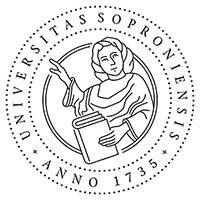Multikulturális gyermekirodalom az idegen nyelvi kompetenciák szolgálatában: Könyvek és tanítási stratégiák az Egyesült Államokban
Absztrakt
Az Egyesült Államokban az elmúlt évtizedekben zajló polgárjogi mozgalmak és bevándorlások jelentős társadalmi és oktatáspolitikai változásokat eredményeztek. Ezek következményeként a közoktatásban tanulók mintegy 40%-a az etnikai és nemzetiségi kisebbségi csoportokból származik, és 10%-a nem beszél angolul. A kutatások azt is jelzik, hogy a sikeres iskolai szereplésüknek elengedhetetlen feltétele az olvasási és szövegértési készségek, valamint a kulturális kompetenciák fejlesztése az új nyelven. Ez az írás arról érvel, hogy ezen kompetenciák fejleszthetők a multikulturális gyermekirodalmon keresztül. A későbbiekben felvázolja, hogyan válasszunk multikulturális gyermekirodalmat, és néhány művön keresztül tanítási stratégiákat és ötleteket ajánl az olvasási és interkulturális kompetenciák fejlesztéséhez az általános iskolában.
Hivatkozások
Altman, L. (1993): Amelia’s road. Lee & Low, New York.
Atwell, N. (1984): Writing and reading literature from the inside out. Language Arts. 61, 240–252.
Busching, B. (1981): Reader’s theater: An education for language and life. Language Arts, 58. 330–338.
Calderón, M. (2007): Gear up ELL plus: Reading Program for K-3. Wright Group/McGraw Hill, Chicago, Ill.
Carpenter, L. M. (2000): Multiethnic children’s literature: It’s need for a permanent place in the children’s literary canon. (Report NO. CS 217 099). Biola University, La
Mirada, CA. (ERIC Document Reproduction Service No. ED441240).
Cummins, J. (1981): The role of primary language development in promoting educational success for language minority children. In: California State Department of Education (Ed.), Schooling and language minority students: A theoretical framework. California State University, Los Angeles. (3–49).
Cunningham, T. H.-Graham, C. R. (2000): Increasing native English vocabulary recognition through Spanish immersion: Cognate transfer from foreign to first language. Journal of Educational Psychology, 92/1. 37–49. doi: https://doi.org/10.1037/0022-0663.92.1.37
Cummins, J. (1984): Language proficiency, bilingualism and academic achievement. In: P.A. Richard-Amato, Making it happen: Interaction in second language classroom from theory to practice. (1996). Addison-Wesley, White Plains, NY.
Derrick, J. (2008): Using comics with ESL/EFL students. http://iteslj.org/Techniques/Derrick-UsingComics .html.. [2010.5.12]
Foglesong Guy, G. (1996): Fiesta! Greenwillow Books, New York.
Foglesong Guy, G. (2005): Siesta. Greenwillow Books, New York.
Foglesong Guy, G. (2007): My grandma. Mi Abuelita. HarperCollins Publishers, New York.
Hodgkinson, H. (2002): Demographics and teacher education. Journal of Teacher Education, 53/2. 102–105. doi: https://doi.org/10.1177/0022487102053002002
Krashen, S-Terrell, T. (1983): The natural approach: Language acquisition in the classroom. The Alemany Press, San Francisco, CA
McCallister, C. (2004): Schooling and the possible self. In: Curriculum Inquiry, 34/4. 425–461. doi: https://doi.org/10.1111/j.1467-873X.2004.00305.x
Mobin-Uddin, A. (2005): My name is Bilal. Boyd Mills Press, Honesdale, PA.
NCES. Executive summary. National report card: 2009. http://nces.ed.gov/nationsreportcard/pubs/main2009/2010458.asp#section2 /.[2010. 05. 3.]
Ogle, D. (1986): A teaching model that develops active reading of expository text. The reading teachers, 39. 564–570.
Rosenblatt, L. (1984): Literature and exploration. (3rd ed.) Modem Language Association, New York.
Short, K. G.-Fox, D. L. (2003): The sociopolitical contexts of cultural authenticity. National Council of Teachers of English, Urbana, IL.
SSS Sunshine state standards, Language arts, Kindergarten, Florida Department of Education. http://www.floridastandards.org/Standards/FLStandardSearch.aspx.[2010. 05. 02.]
Yule, G. (2006): The study of language (3rd ed.). Cambridge University Press, New York.
Villegas, A.-Lucas, T. (2002): Educating culturally responsive teachers. A coherent approach. SUNY Press, Albany, NY.
Winter, J.(2008): Wangari’s trees of peace. Harcourt, Orlando.
Letöltések
Megjelent
Folyóirat szám
Rovat
License
Copyright (c) 2009 Szécsi Tünde

This work is licensed under a Creative Commons Attribution-NonCommercial-NoDerivatives 4.0 International License.








